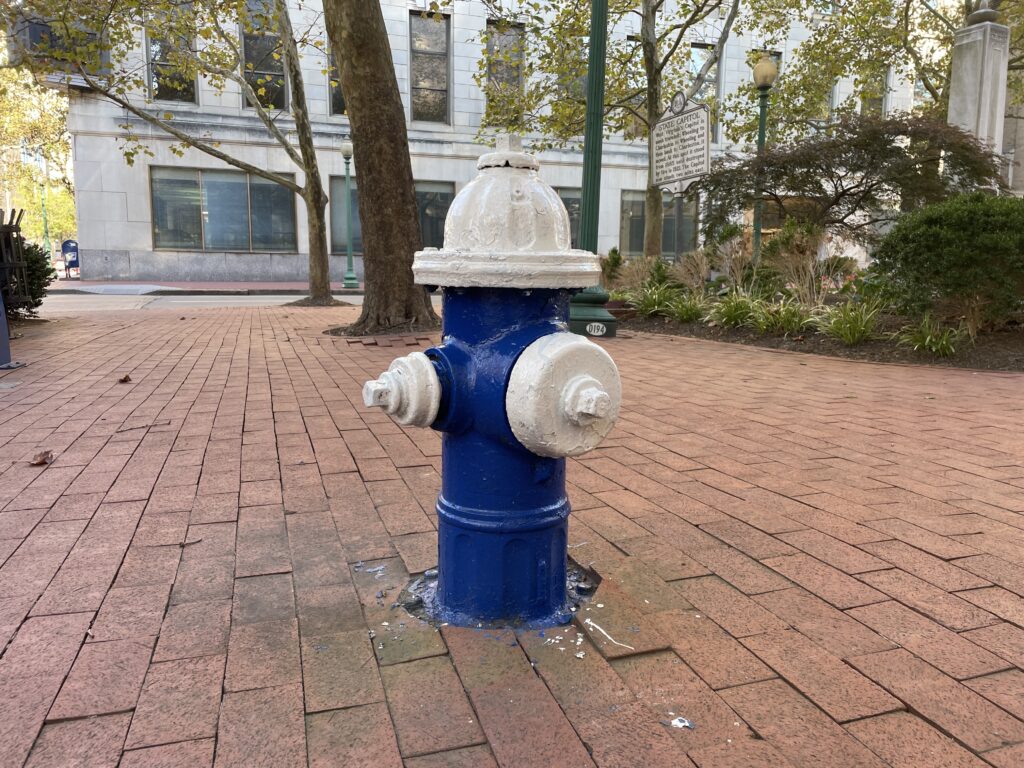During the 2024 regular legislative session, West Virginia lawmakers approved a bill directing the state Public Service Commission to create new rules for the regulation of the state’s fire hydrants with the goal of bringing the regulatory practices up to national standards. (Leann Ray | West Virginia Watch)
The West Virginia Public Service Commission is now accepting public comments on new rules proposed for the regulation and maintenance of the state’s fire hydrants, according to an order filed by the commission on Thursday.
Residents interested in commenting on the rules will have until 4 p.m. on Nov. 6 to file initial comments with the PSC and until 4 p.m. on Dec. 6 for reply comments, according to the order. All comments made should refer to General Order No. 188.52. They can be sent via mail to the Executive Secretary, Public Service Commission of West Virginia, P.O. Box 812, Charleston, WV 25323 or entered online by clicking “Submit a Comment” on the left side of the PSC website’s homepage, then choosing “Formal Case” and entering GO 188.52 for the case number.
The newly proposed rules under review by the PSC are the result of a general investigation launched last June to review and analyze the functionality of the state’s 50,000 fire hydrants. The investigation started after a home burned down on Charleston’s West Side last May when three separate hydrants in the vicinity didn’t work because of a lack of water pressure.
During the 2024 regular legislative session, lawmakers approved a bill directing the PSC to create new rules for the regulation of the state’s fire hydrants with the goal of bringing the regulatory practices up to national standards. A task force was formed to create the new rules, which were initially published publicly in July.
The proposed rules would require water systems in the state that operate hydrants to conduct annual inspections for all fire hydrants and hold flow testing at least every five years to ensure water pressure and flow is enough to help in extinguishing a fire. Hydrants that are found to be out of compliance would be publicly marked. The proposal also increases reporting requirements for water utilities and could implement fines for those that fail to include information in their mandated annual reports.
While increasing oversight and regulation of the state’s fire hydrants, the new rules are likely to also increase customers’ utility bills as more maintenance and investments will be needed to bring hydrants into compliance.
West Virginia is home to more than 250 water systems, most of which are public. A majority of those are considered small or medium districts, serving a couple thousand residents across small regions. Customers paying their bills provide the only source of income for many of these water districts, meaning when improvements or changes are needed, the increase in prices are passed off to ratepayers.
When the Legislature passed the law requiring the PSC to create and implement the rules that are now proposed, they did not include funding in the legislation to help with the testing or potential replacement of hydrants that are not up to standards. This was despite a request from PSC officials before the start of the session for money to be allocated for those purposes, citing a report stating that $70 million would be needed over the next 10 years to make all hydrants operational.
“The [PSC] requested the Legislature to consider funding [to bring all hydrants up to date], but we didn’t get the funding. So that’s the end of that,” said Jonathan Fowler, an engineer with the PSC, at a fire hydrant task force meeting in April. “The cost to apply these rules will be billed into rates moving forward.”
West Virginians, on average, already pay some of the highest water utility rates in the country. As of 2019, residents paid the highest average water bill than any other state, at about $91 per a month, according to data from the National Association of Water Companies.
The state also suffers from some of the highest casualty rates from fires. According to the U.S. Fire Administration, West Virginia’s rate of casualties from all fires is annually more than double the national average. In 2022, according to the agency, about 7.8% of emergency calls in West Virginia were for fires, compared to just 3.7% of emergency calls made nationwide.
GET THE MORNING HEADLINES.

